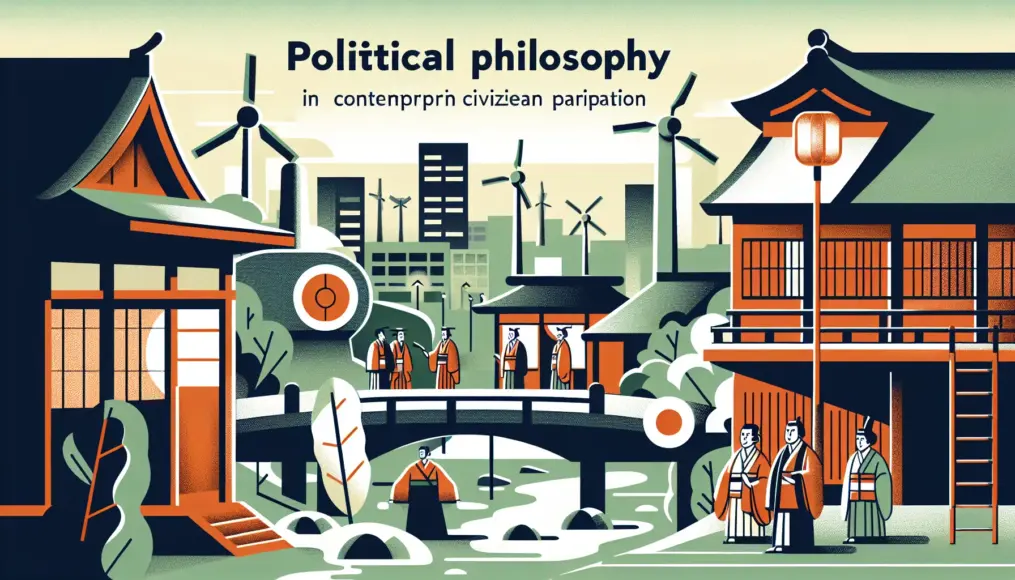Economic stimulus measures are critical policies aimed at revitalizing the economy, but their effects extend far beyond just economic metrics. Particularly in Japan, from the post-war recovery period to the present day, these measures have ushered in significant changes in cultural and social structures. In this article, we will delve into the historical context and explore their cultural impact.
We’ll also examine specific examples from the past to understand how these policies were implemented and the results they produced. Furthermore, we will discuss how new policies aimed at the future may coexist with and influence culture. With plenty of intriguing content ahead, we invite you to stay with us until the end.
- The Relationship Between Post-War Economic Recovery and Stimulus Measures
- Impact on Culture and Social Structures
- Future Prospects and Potential of New Policies
Historical Background of Economic Stimulus Measures
Economic stimulus measures are crucial strategies implemented by governments during challenging economic times. In Japan, the need for such measures became particularly evident during the post-war economic recovery period. Various policies were introduced to rebuild the economy and lay the groundwork for future growth. These initiatives not only aimed to boost economic figures but also had a significant impact on the lives of citizens and the structure of society.
In this section, we will revisit the post-war economic recovery and the evolution of subsequent policies, exploring why economic stimulus measures were necessary and the context behind them. This will help us understand how modern policies have been shaped over time.
Post-War Economic Recovery
After World War II, Japan implemented a range of economic stimulus measures to rebuild its devastated economy. A significant factor in this recovery was the aid received from the United States, which helped establish a foundation for economic growth. The government also increased public investment and introduced policies aimed at revitalizing various industries. Thanks to these efforts, the standard of living for citizens improved, and the economy gradually began to recover.
The policies of this period did more than just improve economic statistics; they played a vital role in restoring the hopes and dreams of the populace, setting the stage for the later period of rapid economic growth.
- Japan implemented various measures for economic recovery after the war.
- Aid from the United States became the backbone of economic growth.
- Government public investments contributed to an improved standard of living for citizens.
Evolution of Policies
As the economy grew, the nature of economic stimulus measures evolved as well. During the period of rapid economic growth, policies were focused on promoting industrial development, encouraging technological innovation and corporate expansion. However, after the economic bubble burst, there was a renewed examination of stimulus measures, leading to an increased emphasis on monetary policy.
This evolution of policies underscores the necessity for flexible responses to changes in economic conditions and societal circumstances. Moving forward, economic stimulus measures will undoubtedly continue to play a vital role in both economic and cultural spheres.
If you found this article interesting, you might also enjoy reading “Reflecting on Japan’s Old Pension System: Its History and Cultural Background.” This piece explores the historical and cultural context of Japan’s pension system and its influence on economic policy, helping to deepen your understanding of the shifts in Japanese society and policy.
- Policies promoting industrial development during the period of rapid economic growth.
- The growing importance of monetary policy after the economic bubble burst.
- The need for flexible policy responses in accordance with economic conditions.
The Impact on Culture
Economic stimulus measures don’t just influence economic trends; they also have a profound effect on our culture and social structure. As the economy revives, changes in job opportunities and lifestyles often lead to shifts in people’s values and perceptions. In this section, we’ll explore how these stimulus measures have altered social structures and affected our daily lives.
Additionally, we’ll analyze how cultural aspects have evolved amid economic growth, considering the ways in which these stimulus policies have impacted our lives. This exploration will deepen our understanding of the multifaceted nature of these policies.
Changes in Social Structure
Economic stimulus measures have significantly transformed social structures. With economic growth comes an increase in job opportunities, giving rise to a diverse array of professions and changing the way people work. For instance, during the post-war recovery period, an uptick in factory jobs and migration to urban areas led to notable population shifts from rural regions to cities. In this way, economic change has been a major factor in reshaping people’s living environments.
Moreover, as social structures evolve, family dynamics and community formations have also been affected. The economic stability brought about by these measures increased participation in education and cultural activities, resulting in shifts in national consciousness and values.
- Increased job opportunities due to economic growth
- Migration from rural areas to urban centers
- Impact on family dynamics and local communities
Influence on Lifestyles
The economic growth spurred by stimulus measures has had a substantial impact on our lifestyles. Notably, consumer trends have shifted, leading to a greater demand for a variety of products and services. For example, during the period of rapid economic growth, household appliances and automobiles became widespread, making life more convenient. This transformation also changed how households manage their finances and lifestyles.
Additionally, economic stability has encouraged participation in leisure activities and cultural events, altering how people spend their free time. With more time available for travel and hobbies, cultural exchanges have flourished, enhancing the overall richness of society.
- Changes in consumer trends and the demand for diverse products and services
- Increased convenience due to the proliferation of household appliances and cars
- Growth in leisure activities and enhanced cultural exchanges
Examples from Post-War Japan
In post-war Japan, the economy experienced rapid growth thanks to various stimulus measures implemented by the government. This chapter explores how these economic policies influenced the nation, particularly during the period of high economic growth and the subsequent bubble economy, providing concrete examples that highlight the impact of such measures. By examining these cases, we can gain a clearer understanding of how policies shape economic outcomes.
Additionally, we will consider the challenges that arose amid this economic growth and their lasting consequences, emphasizing the long-term significance of stimulus strategies. Through specific examples, we aim to shed light on both the effectiveness and the issues surrounding these policies.
The High Economic Growth Period
The high economic growth period spanned from the 1950s to the 1970s, marking a time when Japan’s economy expanded at an astonishing rate. During this era, the government actively implemented stimulus measures, strengthening the economic foundation through public investment and industrial policies. Notably, significant advancements in infrastructure, including transportation networks and energy supply, greatly supported industrial development.
This period also saw an increase in corporate competitiveness, leading to a surge in exports and the establishment of Japan’s position on the international stage. As the standard of living for citizens improved and consumer spending thrived, a positive cycle of overall economic growth emerged.
- The high economic growth period occurred from the 1950s to the 1970s.
- Government investment played a crucial role in strengthening the economic foundation.
- Increased living standards and consumer activity fueled economic growth.
The Impact of the Bubble Economy
The bubble economy emerged from the late 1980s to the early 1990s, characterized by an extraordinary rise in asset prices. During this time, financial easing was introduced as part of the stimulus measures, leading to a low-interest rate policy. Consequently, investments became excessive, causing a rapid increase in real estate and stock prices.
However, when the bubble burst, the economy faced severe repercussions, plunging into a prolonged recession. This situation illustrated that while stimulus measures can temporarily invigorate the economy, a lack of long-term perspective could lead to detrimental effects.
- The bubble economy occurred from the late 1980s to the early 1990s.
- Excessive investment driven by financial easing led to soaring asset prices.
- After the bubble burst, the economy fell into a long-term recession.
Looking Ahead: Future Perspectives
As Japan navigates its economic landscape, it is essential to explore new directions for stimulus measures grounded in past experiences. In an ever-changing economic environment, determining which policies will be effective and how to foster coexistence with culture and society is a critical theme. This section will delve into the potential future policies and their relationship with culture.
New economic stimulus strategies should aim for sustainable growth. Such measures are expected to enhance not only the economy but also the overall well-being of society. By exploring specific policy directions, we can begin to envision a brighter future.
Possibilities for New Policies
Japan’s current economy faces various challenges, including a declining birthrate, an aging population, and environmental issues. Addressing these requires a reevaluation of traditional stimulus measures and the adoption of new approaches. For instance, policies that promote environmentally friendly industries and stimulate local revitalization are worth considering.
Additionally, the advancement of digital technology cannot be overlooked. By leveraging technology to create new business models, we can expect to improve economic efficiency and generate new job opportunities. Thus, a multifaceted approach to future policies is crucial.
- Addressing the declining birthrate and environmental issues is essential
- Policies for fostering environmentally friendly industries and local revitalization
- Building new business models through digital technology
Coexistence with Culture
For stimulus measures to succeed, fostering coexistence with culture is just as important as economic growth. It is vital to establish a reciprocal relationship in which economic growth enriches culture while culture supports the economy. For example, supporting local traditional culture and artistic activities could lead to increased tourism and revitalization of regional economies.
Moreover, in our pursuit of a sustainable society, policies that prioritize cultural values are necessary. When businesses and communities respect and promote culture, we can look forward to a richer society. Future economic stimulus measures will likely evolve to incorporate this awareness of cultural coexistence.
If you found this article intriguing, we also recommend checking out “Exploring the Relationship Between Japan’s National Security and Culture!.” This piece will help deepen your understanding of the interplay between economic policy and cultural coexistence by examining the relationship between security and culture.
- The coexistence of economic growth and culture is vital
- Supporting local culture and artistic activities can stimulate the economy
- Emphasizing cultural values for a sustainable society
Conclusion
Economic stimulus measures have played a crucial role in the development of Japan’s economy. From the post-war recovery period to the era of rapid economic growth, and through the bubble economy, these policies have continually evolved. Throughout this history, it has become clear that stimulus measures not only boost economic figures but also significantly impact culture and social structures.
Looking ahead, future economic stimulus policies need to aim for sustainable growth that fosters harmony with the environment and society. Exploring new policy possibilities will be an essential step toward building a prosperous future. It’s important for each of us to think about how we can engage with these upcoming changes.
- Economic stimulus measures have been vital for Japan’s economic development.
- They have also had a significant impact on culture and social structures.
- Future policies must focus on sustainable economic growth and coexistence.
Let’s keep an eye on upcoming economic policies and consider how they will shape our lives. We welcome your thoughts and feedback!



Comment